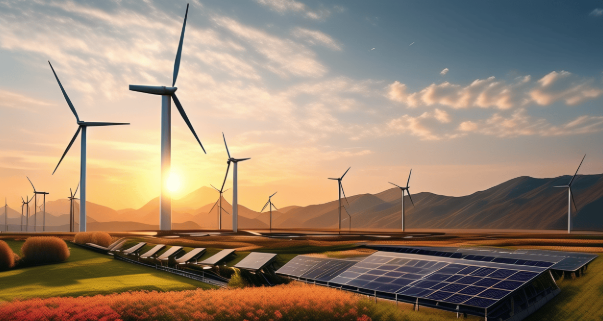

Wind power generation is a new energy utilization method that converts the kinetic energy of wind into electrical energy.
Working principle:
The working principle of wind power generation is to use wind power to drive the windmill blades to rotate. The wind wheel rotates under the action of wind power, converting the kinetic energy of wind into mechanical energy of the wind wheel shaft, and then increasing the speed of rotation through the speed increaser, which finally prompts the generator to generate electricity and output AC power.
Common problems of wind power generation mainly include the following aspects:
The application of infrared thermal imaging technology in wind power generation has many significant benefits, mainly including improved detection efficiency, real-time monitoring, preventive maintenance, safety improvement and economic improvement.
First, infrared thermal imaging technology has the advantage of non-contact detection. It does not need to directly contact the surface of the wind power generation equipment. It obtains the temperature distribution by measuring the infrared radiation on the surface of the equipment, thereby avoiding the need to shut down or dismantle the equipment, reducing interference and downtime during the detection process, and improving the efficiency and convenience of detection.
Second, infrared thermal imaging technology can achieve real-time monitoring. It can monitor the temperature distribution of wind power generation equipment in real time and display it in the form of color images, helping operators to intuitively observe the temperature difference on the surface of the equipment, timely detect abnormal conditions and take corresponding measures to avoid failures and damage caused by overheating or uneven heating of the equipment. In addition, infrared thermal imaging technology helps preventive maintenance. Through regular thermal imaging detection, the health status of the equipment can be evaluated, potential problems such as cracks, wear, overheating, etc. can be found, so that repair or replacement measures can be taken in time to extend the service life of the equipment and improve reliability and safety. In terms of safety, infrared thermal imaging technology reduces the risk of personnel contacting the equipment. Since there is no need to directly contact the equipment, accidental injuries caused by high-speed rotating blades or complex operating environments are avoided. At the same time, no electromagnetic radiation or pollution will be generated during the detection process, which is harmless to the environment and human health.
Finally, infrared thermal imaging technology also has economic advantages. Although the initial investment may be high, preventive maintenance reduces the risk of serious failures and repair costs, improving the economy of wind power generation systems.

LASER Photonics China 2025: A new chapter of optoelectronic technology innovation and global cooperation From March 11 to 13, 2025, the most influential event in Asia's optoelectronics industry, LASER Photonics China, will be held in Shanghai New International Expo Center. As the flagship exhibition in China's laser, optics and optoe...